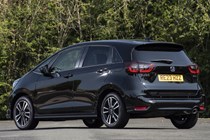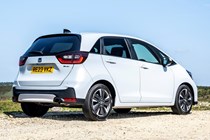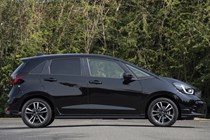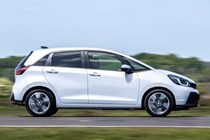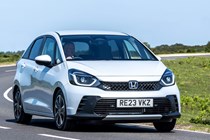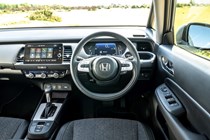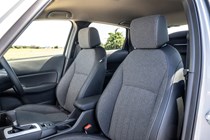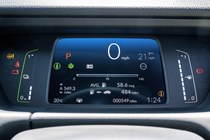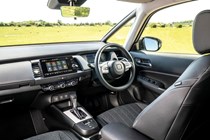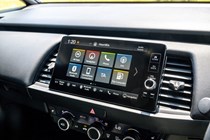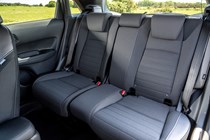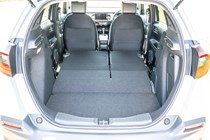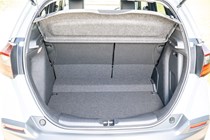
Honda Jazz long-term test
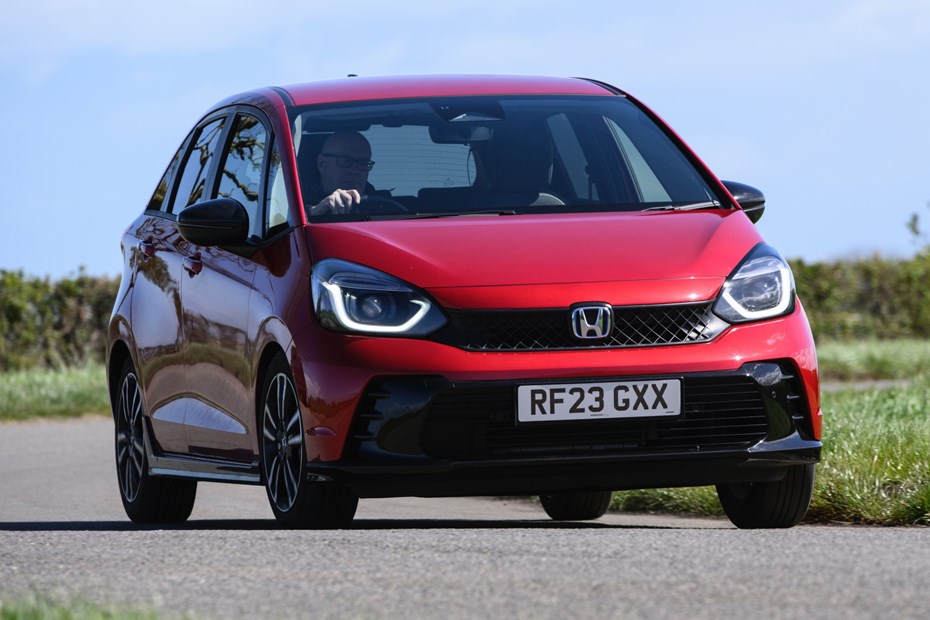
The 2020-on model of the Jazz is Honda’s 4th incarnation of the very popular City Car/Supermini having been on the scene since 2002. Parkers’ content guru Steve ‘Percy’ Lawman has had the chance to drive the car for a few weeks. So, is this a car that you can blow your trumpet about?
Report by: Percy Lawman – Last Updated June 18th 2024
Update 1: Welcome, equipment and options
Update 2: In the cabin, driving, practicality and safety
Update 1: Welcome, equipment and options
Welcome to our shortened version of the Honda Jazz long-term update. Whilst normally, we’d run our long-term cars for up to 6 months, our Jazz is on a shorter loan period of only 8 weeks so we’ll run a slightly slimmed down report.
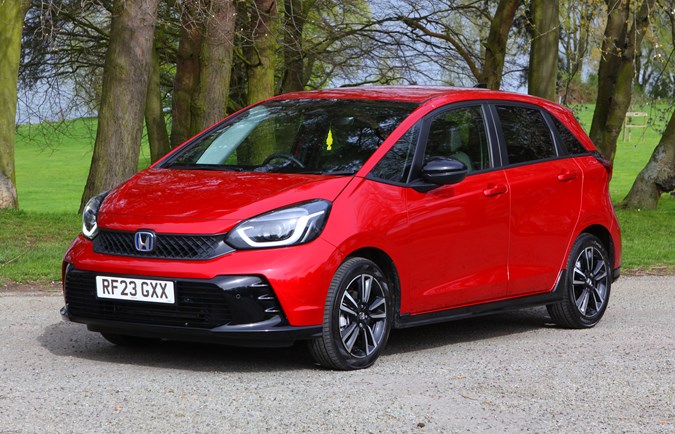
The new Honda Jazz e:HEV [Hybrid] range consists of three available trim levels: Elegance, Advance and Advance Sport all portrayed as being a ‘Hybrid with a Sporty Twist’ which after our initial experiences we feel sums it up pretty well.
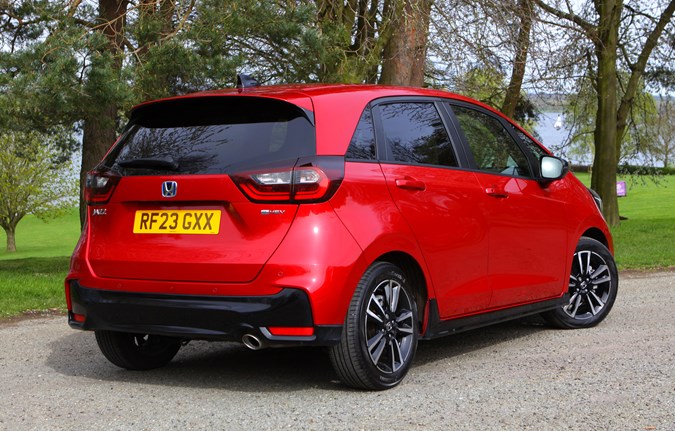
Our new Jazz is only a few months old. RF23 GXX is a top-spec 1.5 i-MMD Hybrid e-CVT in ‘Advance Sport’ trim level and presented in a stunning ‘Premium Crystal Red Metallic’ paintwork which certainly looks the part in the early spring sunshine. Retailing at £29,285 with an additional £950 for the paintwork and trim options, this high-end Jazz tops out at just over £30,000 all in.

In its class, this is approaching the higher end of the pricing scale. It has a number of competitors including the Mazda 2 Hybrid, Suzuki’s Swift and the Renault Clio E-Tech. Also in the mix are other Superminis such as the Peugeot 208, SEAT’s Ibiza and the very budget friendly Dacia Duster.
You’ll see all these cars [plus a handful of others] showing off their prowess as they all gather in a head-to-head ‘Parkers Supermini Special’. Check back with us towards the end of April to see how our Jazz performs and who ultimately grabs the glory and claims the crown.
The heart of our new Jazz is its front-wheel-drive 1.5-litre petrol engine self-charging hybrid power unit with an automatic single speed gearbox, electric motor and small auxiliary battery. This gives a claimed combined MPG of over 61 mpg and a total range of around 550 miles which is excellent for its micro-sized 40-litre fuel tank. The hybrid tech helps keep CO2 levels down to a mere 105g/km [combined] and puts the annual vehicle tax at only £190 for standard rate and a first-year rate of £195. The insurance group rating is 22.
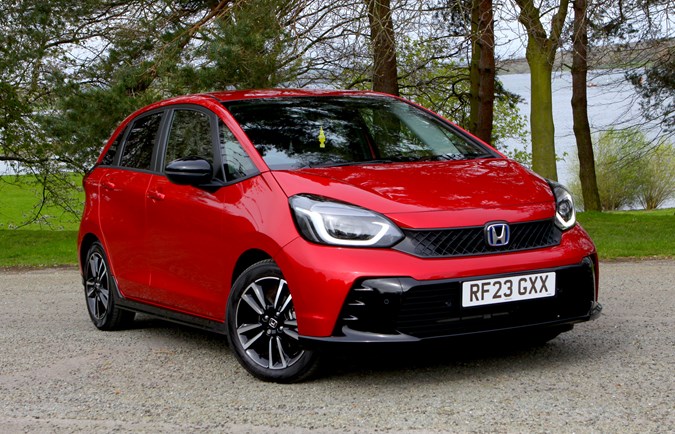
Performance figures show that our car is no slouch and a swift performer with 122ps on tap – accelerating from 0-62mph in 9.3 seconds and giving a top speed of 108mph. It’s particularly brisk away from the mark as the onboard electric motor gives an instant response.
For potential company car drivers, running this trim level of Jazz will result in a BIK level of £125 per month for standard rate [20%] tax payers and £250 per month for higher rate [40%] tax payers.
Parkers gives a full rundown of the car specifications here.
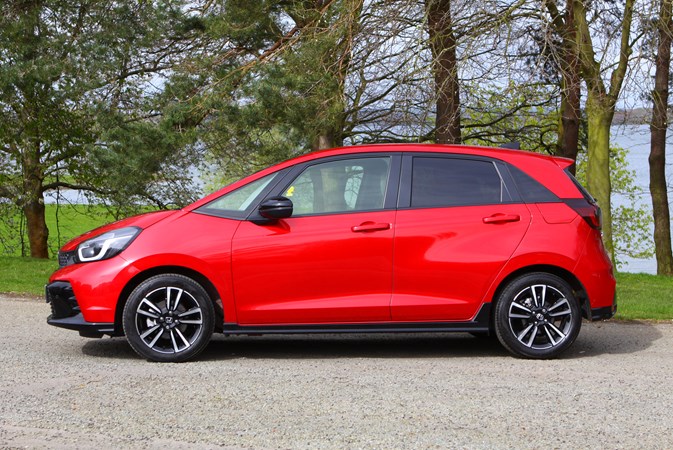
The ‘Advance Sport’ trim level Jazz features an extensive range of equipment fitted as standard with a super thin [but extremely strong] panoramic windscreen which provides enhanced visibility. Other cabin enhancements include heated front seats for both driver and passenger, sports pedals and a three-spoke leather steering wheel.
There are also exterior styling options to add to the mix such as 16-inch alloys, electrically folding black door mirrors, sporty bumper trims, tailpipe with finisher and an aerodynamic tailgate spoiler to name but a few goodies.
The premium quality ‘Anti-Fatigue’ driver and passenger seats which is Honda’s answer to removing that dreaded ‘Numb-Bum’ feeling when travelling longer distances are also a welcome inclusion across the whole range. We’re looking forward to see how these seats fare when we take the car out for an extended run later this week.

One thing about the Jazz, you get the feeling from the outset that this is a quality premium car that’s built well. It feels nicely put together and will stand the test of time. The standard equipment list, even on the base spec ‘Elegance’ trim level is pretty comprehensive and inside, the use of premium quality materials and plastics gives a positive ambience and experience. The centre section of the dash is fitted with some cosy touch material which is a move away from some of the normal hard plastics found in many cars.
A modern feel to the infotainment, albeit with a quirky operating system [OS] and the tech side of the package is the icing on the cake.
Check back with us next week when we’ll have an extended delve into the cabin and practicality. We’ll then go out for some driving adventures putting our Supermini through a variety of different scenarios.
Update 2: In the cabin, driving, practicality and safety
Inside, the Jazz is very deceiving in its size but points to the clever design. Whilst the boot could be perceived as being a little on the small side with the seats up at 304 litres, it was certainly no worse than any of its competitors managing to fit in a premium [and quite bulky] ‘JOIE’ child’s pushchair – and without having to drop the rear seats down which others in the class failed to do. Out and about at the local supermarket saw the Jazz swallow 9 bags of shopping with the rear seats in their normal ‘upright’ position.
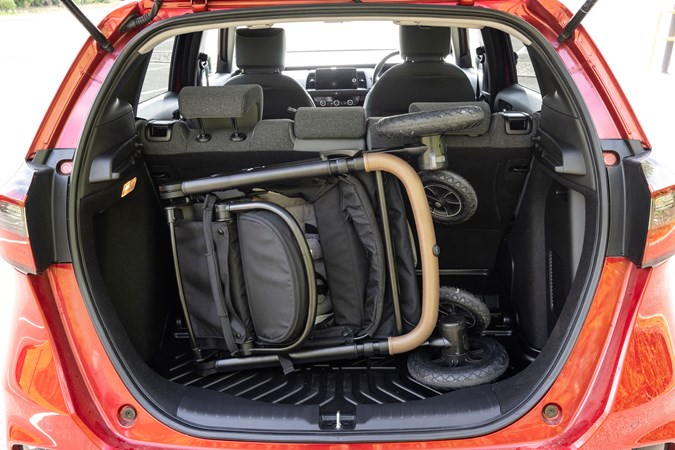
When lowered and sitting flat, the rear ‘Magic Seats’ give you the versatility when you really need it, extending the luggage carrying capabilities to a cavernous 1205 litres. The amount of available space will probably surprise many as we found you could fit in a mountain bike [amongst other things] so space certainly isn’t a problem.
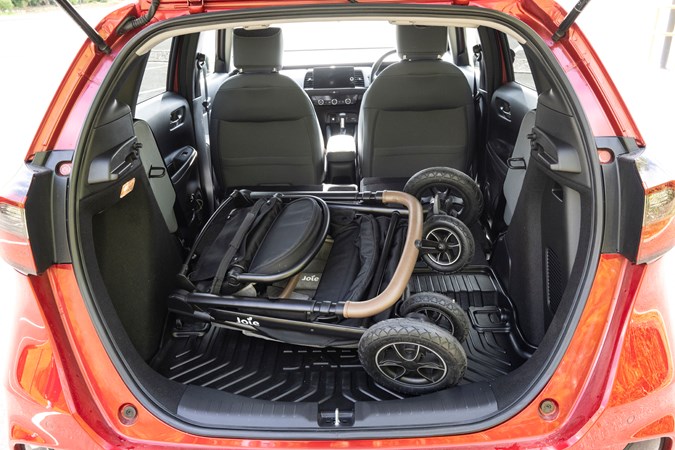
When viewing the Jazz from the exterior, one thing that immediately sprung to mind was that at nearly 4.1m, the Jazz seemed quite ‘long’. So, could our Supermini actually carry 4 adults and without any fuss? Well, I’m a 6-footer and the amount of available room in the rear for passengers is excellent. Sitting in the rear I had oodles of legroom and to the point that I actually would have preferred it [as a driver] if the front driver seat adjustment would allow me one more ‘notch’ rearwards as I felt the driver seat adjustment didn’t quite extend far enough. The amount of legroom in the rear would easily allow this without sacrificing or making the rear passenger experience any different. In this area, the Jazz in our opinion gets a 5-star rating.
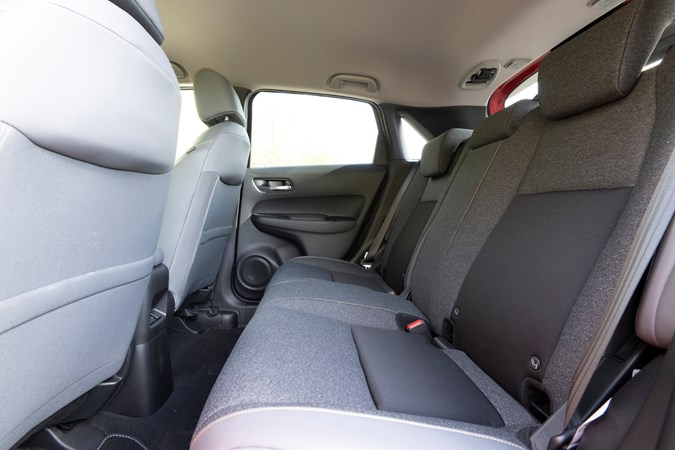
One item that I like about the Jazz is the Garmin navigation and infotainment screen. At 9 inches it’s a good size and seems to have quite high-resolution graphics, pleasing fonts and it wasn’t a strain on the eyes. It was a pleasant departure from the blocky 80’s ‘space invader’ style type graphics experienced on a recent Italian car fitted with a Tom-Tom.
On the tech side, the system sports a smartphone style display which is fitted with Apple Car Play and Android Auto. The ‘My Honda+’ app then gives the user a multitude of app-based functions of car control such as swapping your key for your phone in order to unlock your car. To top it off and for hands-free help, the voice activated ‘Honda Personal Assistant’ is a leap into the world of in-car AI.
Functionality generally is good and the layout is easy to navigate around. Saying that, some menu functions are buried deeply within the interface and it’s here we didn’t like the ‘OS’.
For instance, if you wanted to disable the lane departure warning which is something that could be considered as a potential one-button press candidate, I found myself going through heaps of menu functions in order to achieve this.
- Press the ‘Home’ button
- Scroll the thumb wheel 7 times to get from ‘Fuel Economy’ to ‘Driving Aid’s’
- Push the thumb wheel
- Rotate the thumb wheel up 1 notch to select the ‘Lane Departure’ function
- Push the thumb wheel to select the function as ‘Off’
- Push the ‘Home’ button
- Rotate the thumb wheel 7 turns in order to get back to the required ‘Fuel Economy’ screen
In reality, this can’t [safely] be done whilst driving or on the move. Don’t get me wrong, the menu functions are impressive work quickly. The driver can customise a whole multitude of functions to suit, but the complexity of the menus won’t be to everyone’s taste and we’d certainly advise against delving in for exploration whilst the car is in motion.
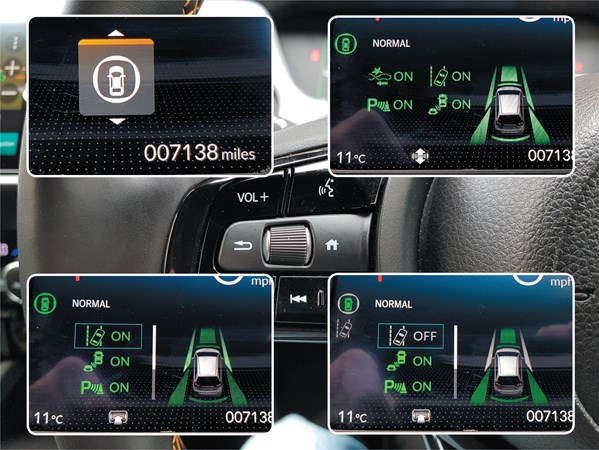
It’s a system that requires quite a learning curve and in addition [this] and other functions are not saved by default. As soon as the car is stopped, you’ll need to go through the same motion if you wanted the function disabled again for the next journey. It’s too much of a faff.
So, it’s now time to take the Jazz out on the road. Reversing off the drive, the Jazz silently moves a few yards with only a brief whine from the electric motors. The battery shows about 80% capacity. The intelligent e:HEV self-charging hybrid powertrain automatically selects from three drive modes: ‘Electric Only’ – normal for slower driving such as in a city or stop/start environment. Hybrid which uses both the engine together with the two electric motors or ‘Engine Only’ – normally to maintain higher speeds and to charge the electric motor battery at the same time.
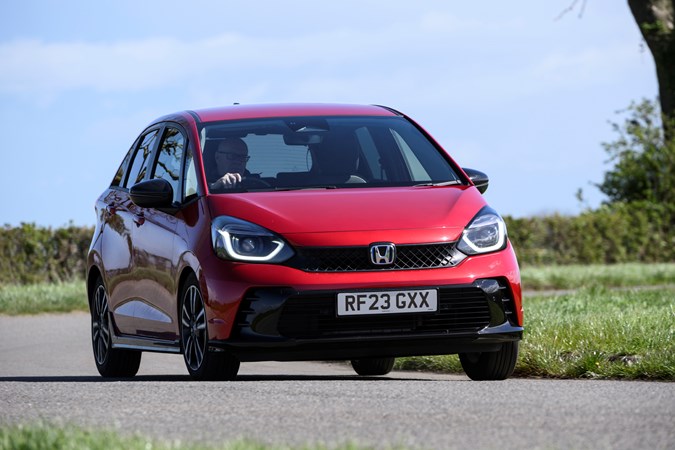
The drive to the office from my house means I have to navigate a handful of country and minor roads and a fast ‘A’ road over the remaining few miles. Cruising slowly at 25-30mph, the Jazz drifts silently whilst in 100% electric mode. The battery power is sitting at around 50% and continues to give good output. After about half a mile, the engine cuts in, seemly revving quite hard as it charges the battery in the process. The revs then slowly drop as the car warms up and settles into its stride switching seamlessly between all three modes depending on driver requirements.
On driving functionality, the driver can select one of three drive modes [Eco, Normal and Sport] with the later giving the hatch a sightly ‘warmer’ – but not quite the hot-hatch feel.
The regenerative braking is nicely balanced without bringing you to a stop too quickly. More often than not, just lifting the throttle will drop the speed fairly quickly. I found on many occasions that I didn’t need to touch the brakes at all.
Out on the open road the Jazz feels a little on the firm side. The car is most at home on the smoother rolling ‘A’ roads and doesn’t get unsettled that easy under normal driving conditions.

Although our own model is the ‘Sportier’ of the three models in the range, it doesn’t like to be pushed too far. Go a little too quick into a corner and expect a certain amount of lean and body roll in the experience.
The Jazz feels more at home in the city, trawling through slower moving traffic rather than being worked harder along twisty ‘B’ roads. Saying that, the car is happy all round provided it’s not being pushed too far towards its limits.
If you’re in town, then for the majority of the time you’ll find the Jazz is quite a content cruiser silently going about its business in EV mode when battery power allows. However, things can liven up somewhat when the engine cuts in and the dB’s increase. You don’t seem to have any control on the revs as they go ballistically skywards and it’s like being at half throttle but you’re not going anywhere.
An odd experience for sure, but I trusted the car to ‘sort itself out’ [which it did] and a few seconds later and we were back to ‘EV’ mode. If you think about it, there’s a lot going on underneath the hood, especially electronically and the way the car seamlessly transitions between the three drive modes is a credit to Honda’s engineers.
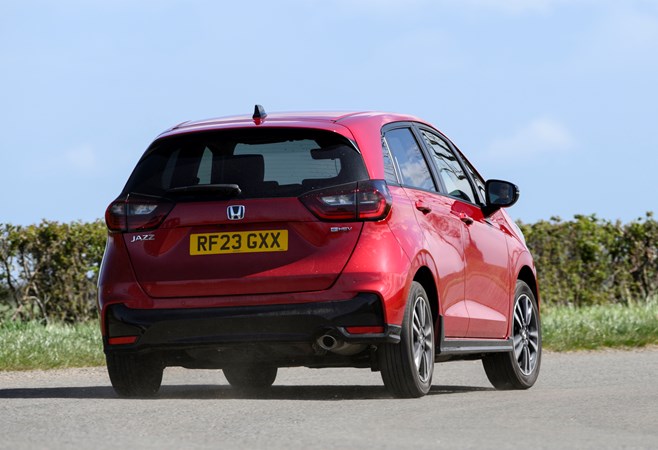
Driving a Hybrid seems to involve a few additional driving experiences thrown in for good measure, the above being one of them. If you’re new to all this, we feel you’ll soon adapt to a modern car that thinks and responds much more dynamically than a normal ICE [Internal Combustion Engine] car does.
The Jazz is part of the new breed of ‘Self-Charging Hybrid‘ cars meaning that there’s no need to plug the car into a charging point in order to charge the additional battery. These hybrids are seen as a bit of a stop-gap scenario technologically between a standard ICE car and a fully electric variant. So, in essence, it’s the best of both worlds.
Out and about on various runs, we managed to exceed the claimed 550-mile range which makes the Jazz a very frugal performer from its micro-sized 40 litre fuel tank. You can fill her up for around £57 based on today’s rate of around £1.43/litre.
The ‘Anti-Fatigue’ driver and passenger seats also proved their worth. During a 400-mile round trip, we found no symptoms of ‘Numb-Bum’ and the seats performed well and better than expected.
Safety:
During a 2020 evaluation, the new Jazz was tested by safety aficionado’s Euro NCAP and awarded the car the highest 5-star rating in testing.
Whilst parking we were impressed by the onboard tech to help you park safely. All round visibility is excellent, probably one of the better cars around and the rear- view camera which is fitted to all models has excellent resolution to help avoid obstacles. Front and rear parking sensors are standard fit again, across the whole range.
Check back with us later when we’ll give potential buyers/owners details on what current deals are available on the new Jazz.
Last Update: Percy Lawman – Last Updated June 18th 2024



